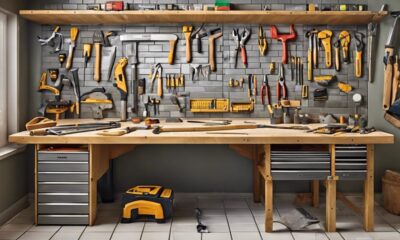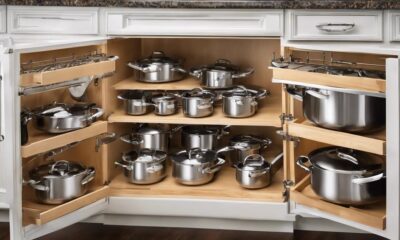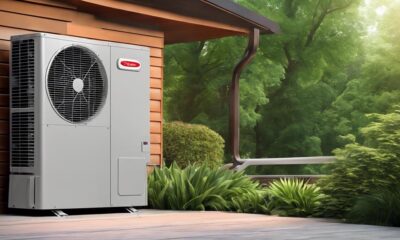Architecture Home Styles
Key Differences Between Modern and Classic Homes
Journey through the contrasting worlds of modern and classic homes to discover the fascinating distinctions that shape our living spaces.
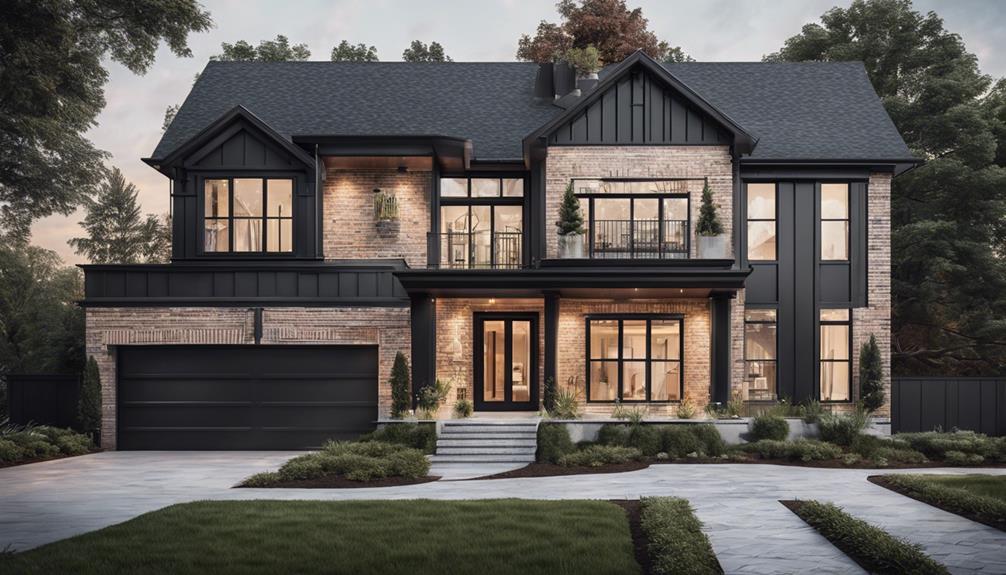
You know the saying, 'Old is gold,' but when it comes to homes, the age-old debate between modern and classic designs can spark intriguing conversations. Differences between these architectural styles go beyond mere aesthetics; they reflect distinct philosophies on living spaces and lifestyle choices.
From architectural styles to interior design elements, there are numerous facets to explore. So, let's unravel the layers of divergence between modern and classic homes and uncover what truly sets them apart.
Key Takeaways
- Modern homes feature minimalistic designs with industrial materials, while classic homes embrace traditional elements like pitched roofs and rich woodwork.
- Interior designs in modern homes prioritize functionality and open spaces, while classic homes showcase ornate furniture and heavy draperies.
- Color palettes differ, with classic homes favoring rich tones and modern homes opting for neutral shades for a sleek appearance.
- Flooring and lighting choices vary, with classic homes featuring hardwood floors and intricate details, while modern homes incorporate energy-efficient fixtures and minimalist designs.
Architectural Styles
In comparing architectural styles between modern and classic homes, the choice of design significantly influences the overall aesthetic and functionality of a living space. Modern architecture embraces minimalism, practicality, and the use of industrial materials like steel and concrete. These elements contribute to a sleek and contemporary look that prioritizes innovation and sustainability.
On the other hand, traditional architectural styles, such as Victorian, Colonial, Craftsman, and Neoclassical designs, often draw inspiration from the past, incorporating intricate design elements that exude a sense of history and charm.
Classic homes tend to focus on maintaining a connection to traditional design elements, while modern homes lean towards efficient use of space and cutting-edge materials. However, it's essential to note that both modern and traditional architectural styles can coexist harmoniously in both new and old homes, offering a unique blend of classic elegance with contemporary innovation.
Exterior Design Elements
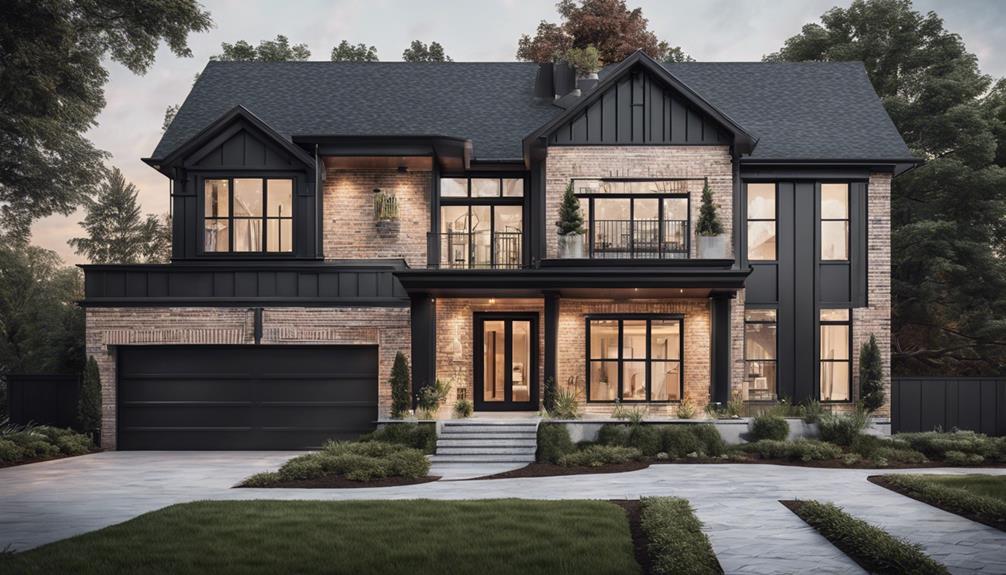
When comparing modern and classic homes, the exterior design elements play a crucial role in defining the overall aesthetic. Roof styles, material choices, and window configurations are key components that distinguish between the two architectural styles.
Understanding these elements can provide insight into the unique characteristics of each home design and help homeowners make informed decisions when selecting their preferred style.
Roof Styles
With regards to roof styles in home design, the contrast between classic and modern architecture becomes strikingly evident.
- Classic homes typically feature pitched roofs such as gable or hip styles with intricate overhangs, adding to their traditional charm.
- Modern homes, on the other hand, often opt for flat roofs to emphasize a minimalist aesthetic and contemporary appeal.
- Additionally, modern flat roofs provide opportunities for rooftop gardens or energy-efficient features like solar panels, showcasing a blend of functionality and innovation in design.
Material Choices
Utilizing a blend of industrial materials like steel, concrete, and glass characterizes the exterior design elements of modern homes, emphasizing a sleek and minimalist aesthetic. These modern materials offer a sharp contrast to the traditional style often seen in classic homes, which lean towards brick, stone, and wood for their exteriors.
While modern homes focus on clean lines and simplicity, classic homes tend to incorporate intricate details like decorative moldings and cornices to evoke a sense of heritage. The choice of building materials plays a crucial role in distinguishing between the two styles, with modern designs opting for a contemporary feel and classic styles aiming to uphold a sense of history and tradition.
Window Configurations
Modern homes typically showcase larger windows with minimal framing, emphasizing the importance of natural light and expansive views. In contrast, classic homes often feature smaller, symmetrically placed windows with traditional elements like shutters and window boxes.
When it comes to window configurations, modern architecture tends to incorporate floor-to-ceiling windows and expansive glass walls for a seamless indoor-outdoor connection. On the other hand, classic homes may opt for stained glass windows, bay windows, or multi-paned windows to maintain a more traditional aesthetic.
Additionally, modern designs often utilize skylights and clerestory windows to introduce more natural light and create a sense of spaciousness within the home.
Interior Design Characteristics
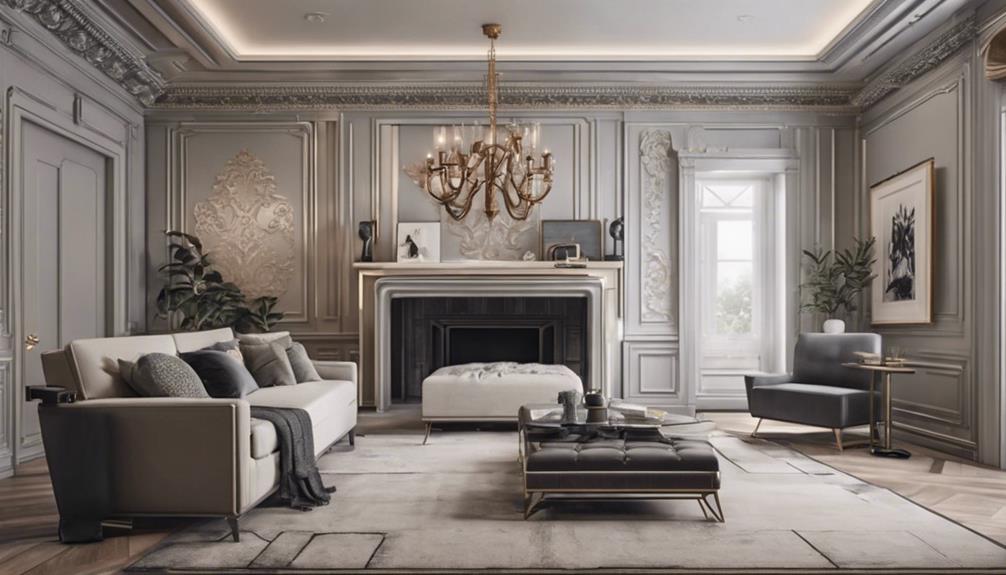
In classic homes, interior design encompasses rich woodwork, ornate furniture, and antique pieces to create a sense of timeless elegance and heritage. On the other hand, modern homes embrace minimalist design, focusing on functionality and clean lines to achieve a sleek and contemporary look. While classic homes lean towards an antique interior with traditional craftsmanship and intricate detailing, modern homes prioritize simplicity and open floor plans for a more spacious feel.
Classic homes often feature heavy draperies, wallpaper, and earthy color palettes, fostering a cozy and warm ambiance. In contrast, modern homes opt for a neutral color palette that emphasizes simplicity and allows for a more versatile and timeless aesthetic. By incorporating sleek furniture and a minimalist approach, modern interior design creates a sense of openness and airiness that aligns with the preferences of individuals seeking a more streamlined and efficient living space.
Color Palette Variations
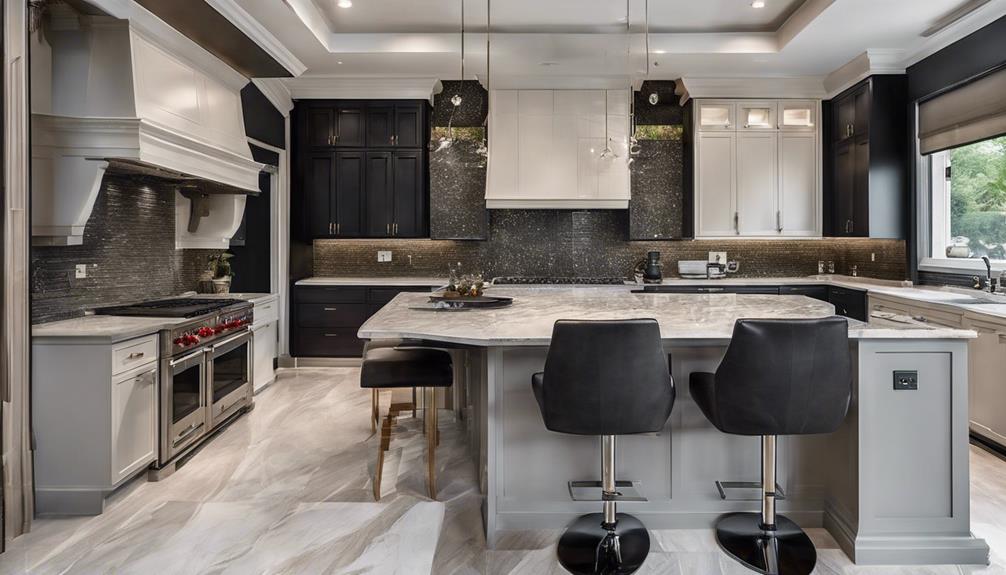
Moving from the interior design characteristics of classic and modern homes, an essential element that distinctly sets them apart is the variation in their color palettes.
In classic homes, rich colors like deep greens, blues, and reds are commonly used to evoke a traditional and cozy ambiance. Conversely, modern homes lean towards neutral tones such as whites, grays, and beige to achieve a minimalist and contemporary look.
The color choices in classic homes exude a historical and ornate style, while modern homes focus on simplicity and clean lines with their color selections. Classic homes may integrate vibrant colors in wallpapers, upholstery, and decor to enhance the traditional charm, whereas modern homes prefer muted tones for a sleek and uncluttered appearance.
These contrasting color palette preferences play a pivotal role in defining the overall ambiance and style of the living space, reflecting the evolution of interior design towards more modern and minimalist trends.
Flooring and Materials
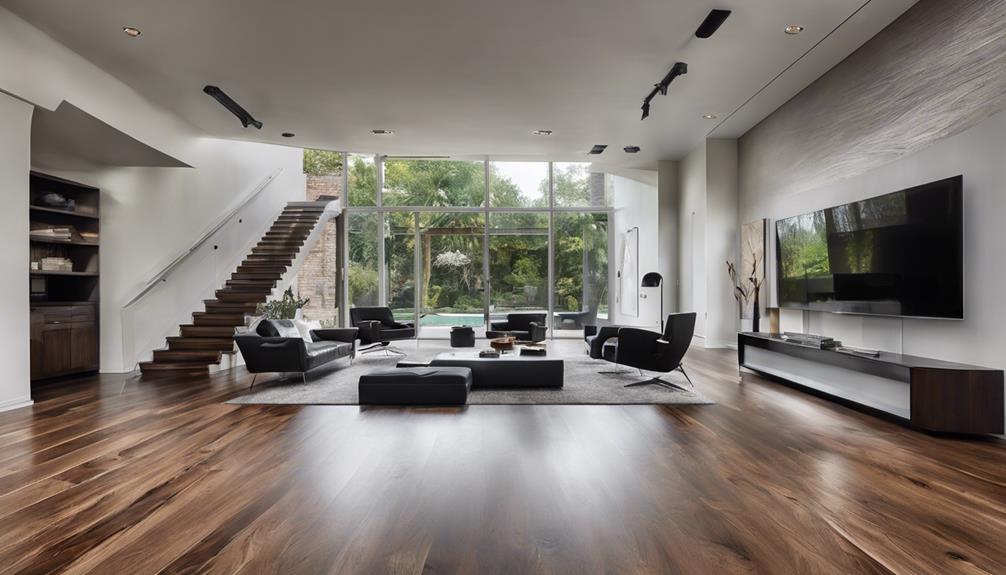
When considering the aspect of flooring and materials in homes, the choice of materials plays a crucial role in defining the overall aesthetic and style of the living space. Classic homes often feature hardwood flooring crafted from oak, maple, or cherry, imbuing the interior with a warm and traditional ambiance. In contrast, modern homes opt for materials like concrete, tile, or engineered hardwood to achieve a sleek and contemporary look.
While classic homes may boast intricate tile patterns or vintage rugs to infuse character and charm into the space, modern homes prioritize easy-to-maintain materials such as polished concrete or large-format tiles for a clean and minimalist aesthetic. Classic homes often showcase handcrafted details in the flooring, like intricate inlays or borders, which enhance the overall design. On the other hand, modern homes lean towards simplicity and functionality in their flooring choices, reflecting a more streamlined and efficient approach to design.
Lighting Fixtures and Trends
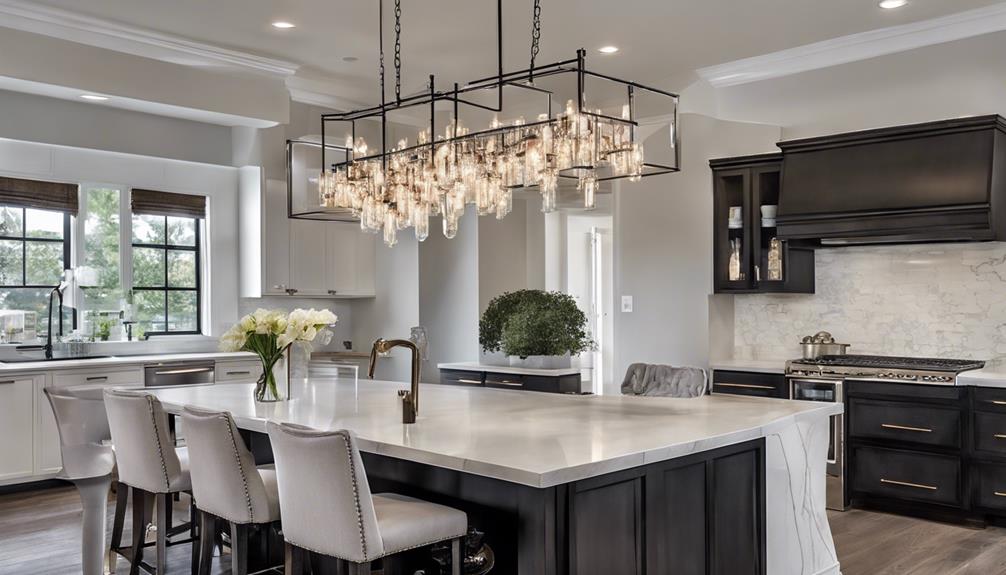
Lighting fixtures play a pivotal role in defining the ambiance and style of both modern and classic homes. In modern homes, energy-efficient LED lighting fixtures are commonly used to reduce electricity consumption, providing a sustainable and cost-effective lighting solution. On the other hand, classic homes often feature ornate chandeliers and sconces, adding a touch of elegance and tradition to the space.
Trending in modern homes are recessed lighting fixtures that offer a sleek and minimalist look, seamlessly blending into the ceiling and providing a clean aesthetic.
Classic homes may opt for pendant lights with intricate designs, serving as both functional lighting sources and decorative elements that enhance the overall charm of the room.
Smart lighting systems have become popular in modern homes, allowing for customizable lighting options and significant energy savings through automated controls and efficient usage.
Furniture Styles and Trends
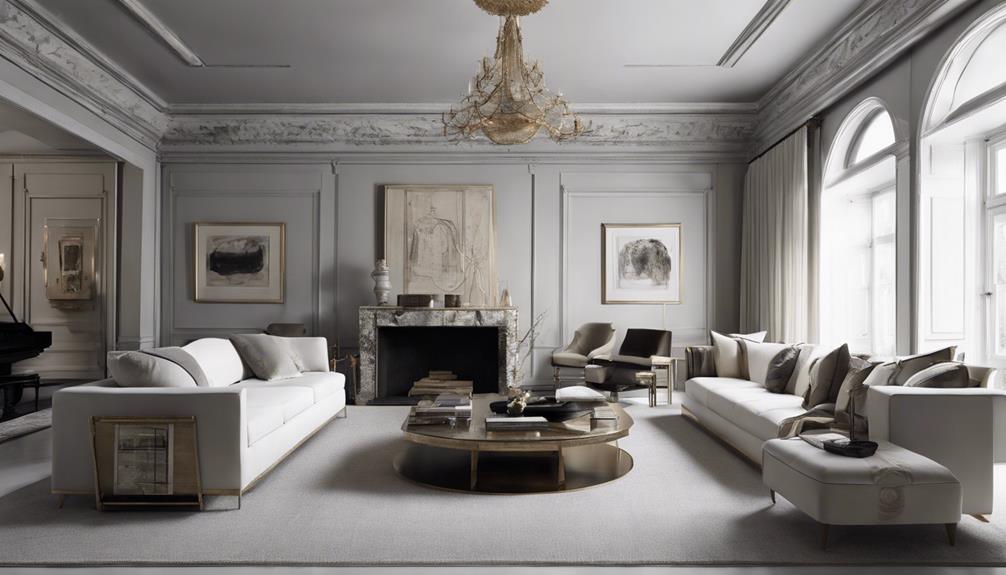
Exploring the evolving landscape of furniture styles and trends reveals contrasting characteristics between traditional and modern homes. Classic homes often boast dark wood furniture adorned with intricate designs and rich upholstery, exuding a timeless and elegant charm. In contrast, modern homes lean towards minimalist design, featuring furniture with clean lines and eco-friendly materials for a contemporary and sleek aesthetic.
While classic homes may incorporate antique pieces and heavy draperies, adding a touch of nostalgia and warmth, modern homes prioritize functional design and simplicity. They opt for sleek furniture designs and a neutral color palette to create a sense of spaciousness and airiness within the living space.
Whether one prefers the opulence of classic furniture or the simplicity of modern pieces, the choice significantly impacts the overall ambiance of the home. By understanding these distinctions in furniture styles, homeowners can curate spaces that align with their personal tastes and lifestyle preferences.
Kitchen Design Variances
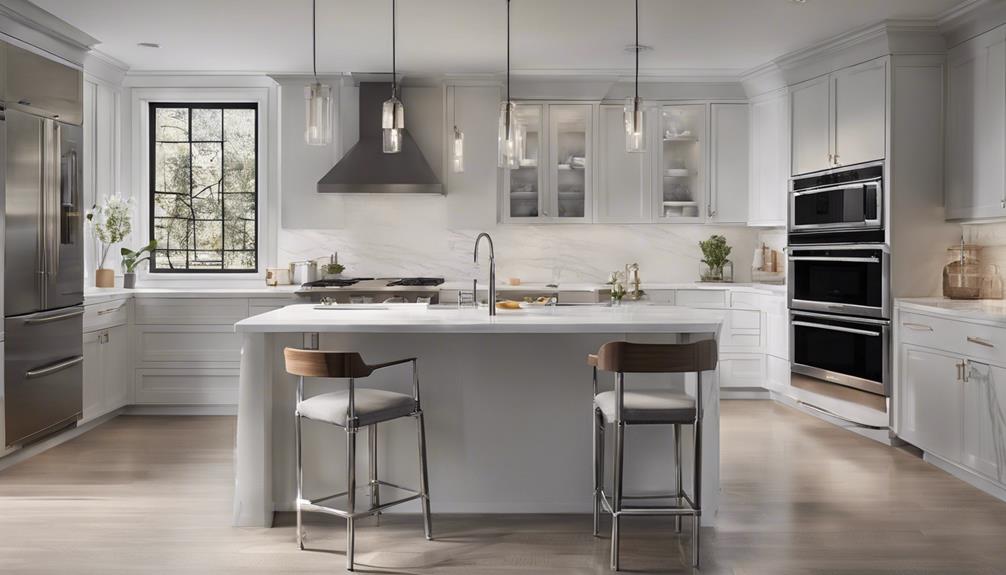
In comparing kitchen design variances between modern and classic homes, distinct features emerge that reflect the aesthetic preferences and functional priorities of each style. Modern kitchens often showcase sleek designs with minimalist features, such as flat-panel cabinets and integrated appliances, creating a clean and contemporary look. On the other hand, classic kitchens tend to lean towards more ornate details, like crown molding, traditional cabinetry, and decorative hardware, exuding a sense of timeless elegance.
Modern kitchens prioritize functionality by incorporating hidden storage solutions and high-tech gadgets for convenience.
Classic kitchens emphasize craftsmanship, utilizing traditional materials such as wood, stone, and ceramic tiles to showcase exquisite artistry.
Additionally, modern kitchens may integrate smart technology, energy-efficient appliances, and sustainable materials to enhance the overall efficiency and sustainability of the space, appealing to those seeking a more environmentally conscious approach to design.
Bathroom Design Contrasts
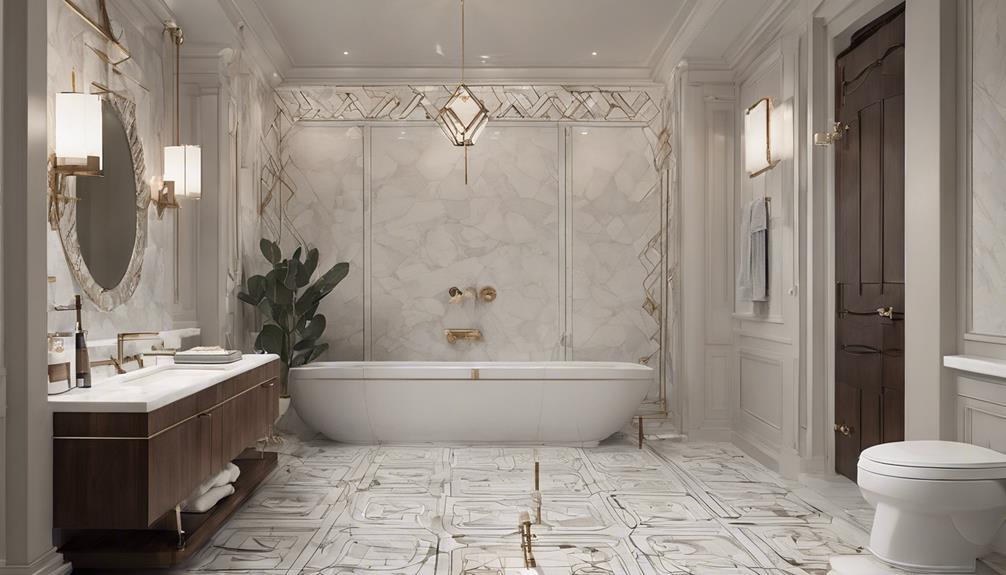
Moving from the realm of kitchen design variances to the realm of bathroom design contrasts reveals distinct differences in style and functionality between modern and classic homes.
In modern bathrooms, you'll find sleek, minimalist designs with clean lines and contemporary fixtures that prioritize functionality and efficiency. These bathrooms often incorporate smart technology and energy-saving features like LED lighting and low-flow fixtures.
On the other hand, classic bathrooms boast ornate details such as intricate tile patterns, traditional faucets, and vintage-inspired vanities, exuding luxury and elegance. The timeless sophistication of classic bathrooms is enhanced by elements like clawfoot tubs, pedestal sinks, and elaborate mirrors.
While modern bathrooms lean towards neutral tones and monochromatic schemes for a minimalist look, classic bathrooms may feature richer colors like deep blues, greens, or warm browns to evoke a more traditional feel. Whether you prefer the modern simplicity or the classic opulence, both styles offer unique design differences to suit your taste and elevate the ambiance of your home.
Landscaping Features
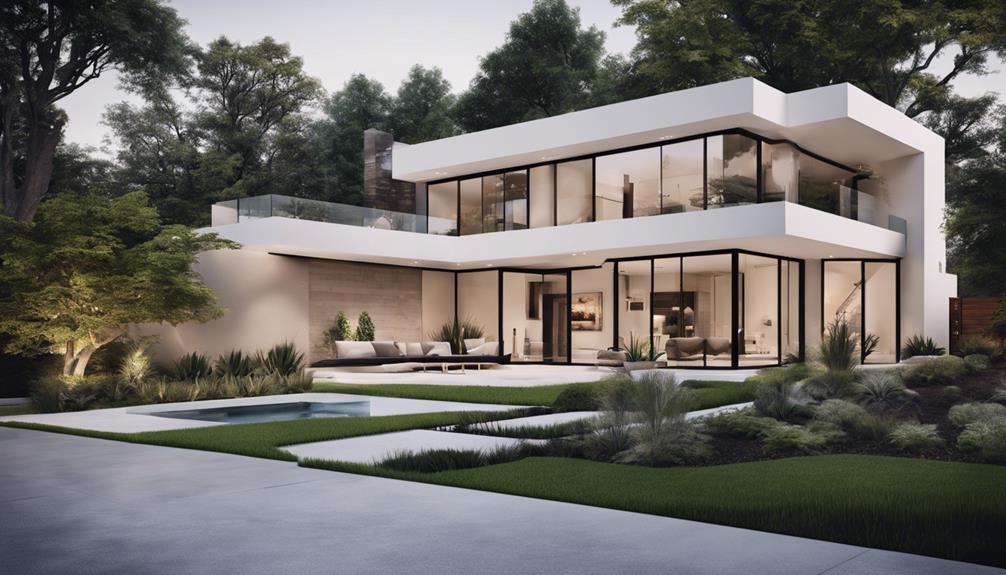
When comparing modern and classic homes, differences in landscaping features become apparent through variations in garden size, design styles, and plant selection.
Classic homes often boast larger lawns and elaborate outdoor spaces, featuring formal, symmetrical designs with traditional elements like hedges and flower gardens.
In contrast, modern homes lean towards minimalist landscaping with clean lines, native plants, and eco-friendly practices such as xeriscaping and water-saving irrigation systems.
Garden Size Variation
Amidst the evolving trends in home design, the landscaping features of classic and modern homes diverge notably in garden size variation. Classic homes often boast expansive gardens with formal flower beds, intricate hedges, and elegant fountains, reflecting a more traditional and elaborate style.
In contrast, modern homes showcase smaller garden sizes, emphasizing low-maintenance landscaping with native plants, rock gardens, and sustainable irrigation systems. This shift towards functionality and sustainability is evident in the incorporation of rain gardens, edible landscapes, and eco-friendly hardscaping materials.
The size and design of the garden play a pivotal role in defining the overall aesthetic and usability of outdoor living spaces in both classic and modern homes.
Design Styles Contrast
In comparing the design styles of classic and modern homes, we observe a stark contrast in their landscaping features. Classic homes typically boast lush, formal gardens with elements like fountains, topiaries, and formal hedges, creating a traditional and elegant ambiance. On the other hand, modern homes embrace minimalist landscaping designs with clean lines, low-maintenance plants, and sustainable practices such as rainwater harvesting and native plantings. They prioritize eco-friendly features like xeriscaping to reduce water usage and may incorporate green roofs or walls for energy efficiency. Below is a comparison table highlighting the key differences in landscaping features between classic and modern homes:
| Aspect | Classic Homes | Modern Homes |
|---|---|---|
| Design Style | Formal, lush gardens with structured pathways | Minimalist landscaping with clean lines |
| Key Features | Fountains, topiaries, formal hedges | Sustainable practices, low-maintenance plants |
| Eco-Friendly | Less focus on eco-friendly practices | Emphasis on eco-friendly landscaping techniques |
Plant Selection Diversity
The selection of plants in both classic and modern homes' landscaping features reflects distinct preferences and styles that shape the overall aesthetic and functionality of the outdoor spaces.
Classic homes often showcase a diverse array of traditional favorites like roses, hydrangeas, and peonies, adding a touch of timeless elegance to the landscape. On the other hand, modern homes lean towards low-maintenance options such as succulents, ornamental grasses, and native plants, promoting sustainability and biodiversity.
While classic homes may feature structured designs with manicured lawns, modern homes embrace naturalistic landscaping, focusing on minimalistic plant choices that prioritize ecological balance and functionality.
Frequently Asked Questions
What Are the Differences Between Old Houses and New Houses?
When comparing old houses to new ones, we notice distinct variations in style, design, and functionality. Old houses often showcase traditional architectural styles, while new builds embrace modern design elements.
The footprint and layout of traditional homes differ from the open-concept spaces found in modern houses. Additionally, old homes may have smaller windows, while new homes incorporate large windows for natural light.
These differences contribute to unique charms and functionalities in each type of dwelling.
What Is the Difference Between Modern and Traditional Design?
When it comes to modern versus traditional design, the distinction lies in their fundamental principles.
Modern design embraces minimalism and industrial materials, creating sleek and open spaces.
In contrast, traditional design focuses on historical styles and intricate details, evoking a sense of warmth and charm.
Each style offers unique aesthetics and functionality, catering to different preferences and lifestyles.
What Are the Characteristics of a Traditional Home?
Sure, traditional homes often boast large porches, dormers, and intricate details like stained glass windows and hand-carved woodworking. These homes typically have smaller, symmetrically-placed windows that may require more artificial lighting.
Compared to modern homes, traditional ones offer a warm and cozy aesthetic with a focus on charm and detail. Additionally, traditional homes often have a larger footprint and smaller, single-purpose rooms, differing from the more open-concept layouts of modern homes.
What Is the Difference Between Past and Present House?
When comparing past and present houses, the most notable differences lie in design, materials, and functionality. Modern homes embrace minimalism, clean lines, and industrial materials like steel and concrete, while classic homes showcase traditional craftsmanship, intricate details, and rich materials such as wood and stone.
Additionally, present houses prioritize energy efficiency and easy maintenance, contrasting with the historical charm and intricate detailing often found in past homes.
Conclusion
In conclusion, the key differences between modern and classic homes are vast and varied.
From architectural styles to interior design characteristics, each type offers a unique appeal.
By understanding these distinctions, homeowners can make informed decisions that align with their personal preferences and lifestyle.
Remember, whether you prefer the sleek lines of modern minimalism or the charming details of classic elegance, both styles have their own allure and beauty.
Choose wisely to create a space that truly speaks to your soul.
- About the Author
- Latest Posts
Introducing Ron, the home decor aficionado at ByRetreat, whose passion for creating beautiful and inviting spaces is at the heart of his work. With his deep knowledge of home decor and his innate sense of style, Ron brings a wealth of expertise and a keen eye for detail to the ByRetreat team.
Ron’s love for home decor goes beyond aesthetics; he understands that our surroundings play a significant role in our overall well-being and productivity. With this in mind, Ron is dedicated to transforming remote workspaces into havens of comfort, functionality, and beauty.
Architecture Home Styles
Make My House Look Less Flat: 10 Easy DIY Tricks
Kick your flat-front house up a notch with these 10 easy DIY tricks that will add depth and character – your home will never look the same!
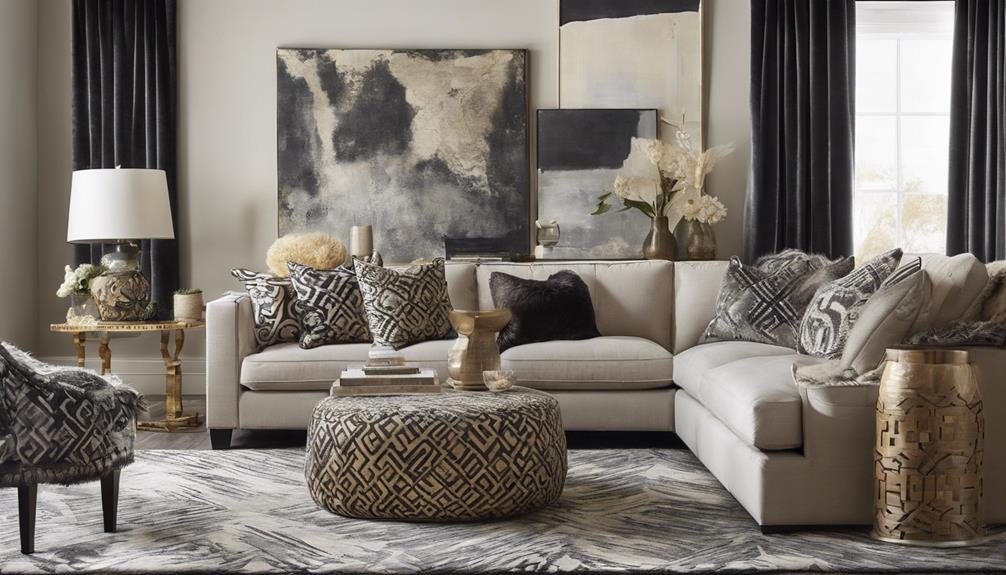
When pondering on how to make our homes appear less flat, we often seek simple solutions that can spruce up our space without breaking the bank.
But what if we told you there are ten easy DIY tricks that can transform your flat-front house into a stylish abode?
From updating light fixtures to revamping the entryway, these tips range from quick fixes to more involved projects, providing a spectrum of options for adding depth and character to your home's exterior.
Key Takeaways
- Upgrade lighting fixtures for a modern and sophisticated ambiance.
- Opt for neutral tones and minimalist decor for a harmonious look.
- Implement budget-friendly updates like faux built-ins and hardware refresh.
- Enhance curb appeal with landscaping, colorful flowers, and strategic lighting.
Update Old Light Fixtures
Let's shed some new light on your space by revamping those outdated fixtures with a modern twist. Upgrading to modern pendant lighting can bring a contemporary flair to your home effortlessly. Swapping out old pendant lights or lamps for sleek, minimalist designs can completely transform the ambiance of a room. By embracing modern pendant lighting trends, you not only illuminate your space but also add a touch of sophistication and style.
Updating light fixtures is a cost-effective way to revamp the aesthetic of any room. Consider mixing different types of light fixtures to create a unique and personalized lighting design that suits your taste. Whether you prefer a bold statement piece or a subtle, elegant fixture, modern pendant lighting offers a wide range of options to choose from. With a simple change in light fixtures, you can elevate the overall look and feel of your space, making it more inviting and visually appealing.
Embrace Neutral Tones
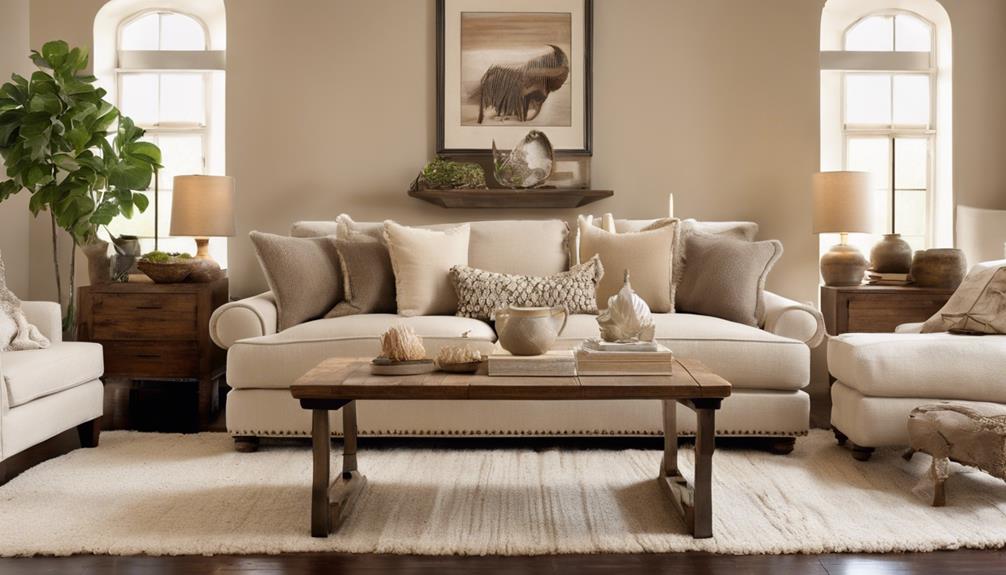
Let's talk about how embracing neutral tones can transform a space effortlessly.
Earthy color palettes and minimalist decor choices can bring a sense of calm and sophistication to any room.
Earthy Color Palettes
Embracing neutral tones in your home decor palette can effortlessly exude sophistication and elevate the overall ambiance of your living spaces. Earthy color palettes, such as warm browns and soft greens, offer a timeless and elegant look that can make your space feel more luxurious.
These natural hues, whether on walls, furniture, or decor pieces, contribute to a sense of tranquility and harmony in your home. By incorporating earthy colors, you can create a high-end design that feels both welcoming and stylish.
Additionally, neutral color schemes make it easier to mix and match furniture and accessories, allowing for a cohesive and polished look throughout your living areas. Experimenting with earthy tones can truly transform your home into a sanctuary of comfort and sophistication.
Minimalist Decor Choices
To maintain the sophisticated and elegant ambiance established with earthy color palettes, our focus now shifts towards the allure of Minimalist Decor Choices accentuated by the embrace of neutral tones.
Embracing neutral colors such as whites, creams, and grays can transform your space into a minimalist haven. These hues have the power to open up a room, creating a sense of airiness and expansiveness.
By integrating neutral tones into your furniture, walls, and decor, you can achieve a clean and cohesive aesthetic that exudes timelessness and elegance. Minimalist decor in neutral shades provides a versatile backdrop that complements any style or theme seamlessly.
The calming and serene atmosphere created by neutral palettes is perfect for those seeking a modern and uncluttered feel in their home.
Create Faux Built-Ins
Enhance your space effortlessly by incorporating faux built-ins using bookcases or DIY bookshelves to create a custom look without the hefty price tag. By mimicking built-ins with strategically placed bookcases, you can add depth and architectural interest to an otherwise flat-front house. Look into IKEA bookshelf hacks and tutorials for cost-effective ideas on achieving the appearance of built-in shelving without breaking the bank.
Consider framing doors or windows with bookcases to give the illusion of custom carpentry work. Placing bookcases on each side of a fireplace or TV can establish a cohesive and visually appealing built-in look. To further enhance the illusion, ensure the bookcases have matching trim and paint colors to seamlessly blend them into the space for a high-end finish. This simple and budget-friendly trick can transform your space, giving it a tailored and sophisticated feel.
Refresh Hardware
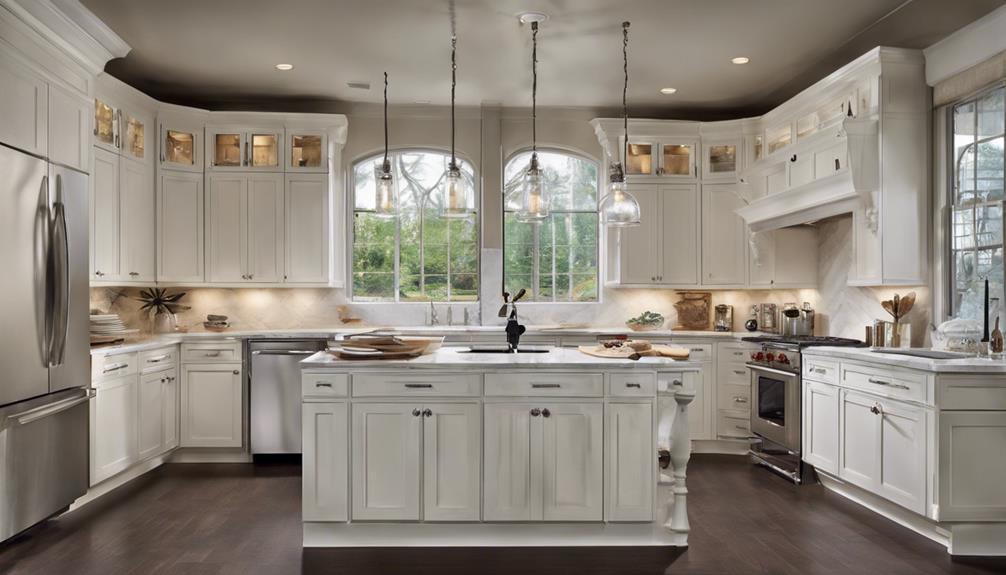
Updating your hardware, such as drawer pulls and knobs, can instantly revitalize the appearance of cabinets and furniture. When it comes to front doors, consider swapping out the old, worn-out hardware for sleek and modern handles or locks. Opting for finishes that complement the overall style of your home, whether it's a stone cottage or a brick townhouse, can significantly enhance its curb appeal. Coordinating the hardware finishes throughout your house creates a cohesive and polished look that ties everything together seamlessly.
In addition to cabinet hardware, don't overlook the impact of refreshing the hardware in other areas of your home. Swapping dated towel bars and hooks in the bathroom for more contemporary styles can elevate the room's aesthetic and bring a touch of luxury. These affordable and quick hardware upgrades offer a cost-effective way to update your home without the need for a major renovation, giving your space a fresh and modern feel.
Enhance Landscaping

Let's elevate the curb appeal of your home by incorporating vibrant perennials and eye-catching mulch to breathe life into your landscaping.
Adding a charming walkway illuminated with pathway lighting can enhance the overall charm of your exterior space effortlessly.
Don't forget to consider budget-friendly options like resin pots and simple shrubs to create a welcoming atmosphere without breaking the bank.
Plant Colorful Flowers
Revamp your flat-front house with a burst of vibrant color by planting a variety of colorful flowers to elevate your landscaping. Adding colorful flowers not only boosts curb appeal but also brings life and charm to your home exterior. By carefully selecting different flower varieties that bloom at various times, you can ensure year-round beauty and interest. Strategic placement of these flowers can create focal points, drawing attention away from the flat facade and towards the natural beauty of your garden. Mix annuals with perennials to enjoy a long-lasting display of colors and textures. Enhance your outdoor space with a palette of nature's hues that will captivate visitors and passersby alike.
| Benefits of Planting Colorful Flowers | |
|---|---|
| Boosts curb appeal | Adds visual interest to the exterior |
| Provides year-round beauty | Creates focal points |
| Draws attention away from flat facade | Ensures long-lasting color appeal |
Add Pathway Lighting
Elevate your home's exterior allure by illuminating the walkway with pathway lighting, enhancing both the safety and aesthetic appeal of your landscaping. Choose from a variety of outdoor light fixtures to add a touch of sophistication and style to your pathway.
Opt for LED pathway lights for their energy efficiency and long-lasting qualities. Solar-powered options aren't only cost-effective but also environmentally friendly. These lights not only guide your way in the dark but also highlight architectural features and landscaping elements, boosting your home's curb appeal.
Experiment With Tiles
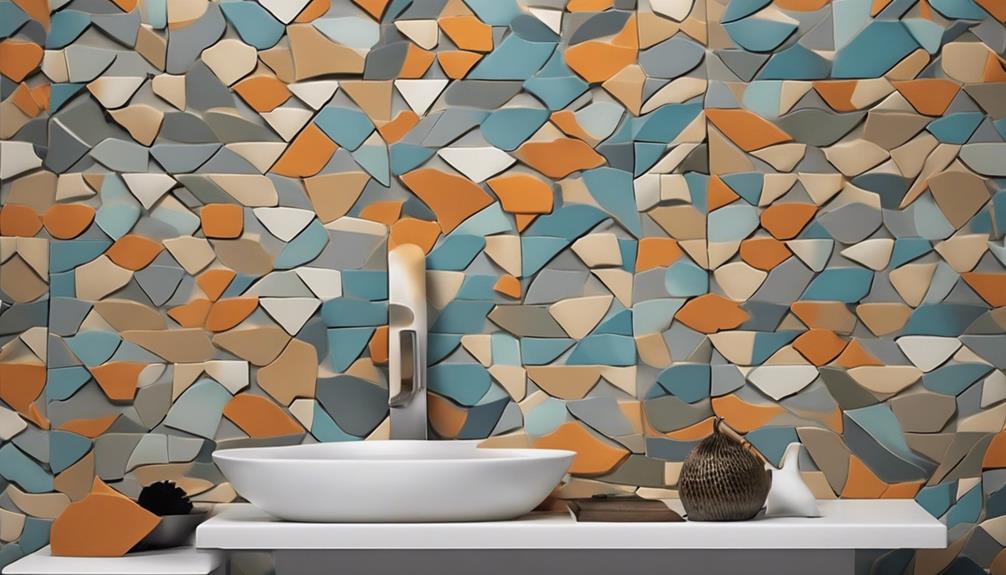
Experimenting with tiles in your home renovation project can bring a touch of sophistication and personality to your space. Here are some innovative ways to incorporate tiles into your design:
- Upgrade Your Kitchen with a Tile Backsplash: Installing a tile backsplash, like classic subway tile, can instantly elevate the look of your kitchen. It's a timeless and cost-effective option that adds a luxurious feel without breaking the bank.
- Create Visual Interest with Patterns and Focal Points: Tiles offer endless possibilities for creativity. Arrange them in unique patterns or use contrasting colors to create eye-catching focal points in your kitchen or bathroom, enhancing the overall aesthetic appeal of the space.
- Play with Shapes, Colors, and Textures: Don't be afraid to mix and match different tile shapes, colors, and textures. This experimentation can add depth and personality to your design, making your home feel more customized and stylish.
Install Decorative Molding
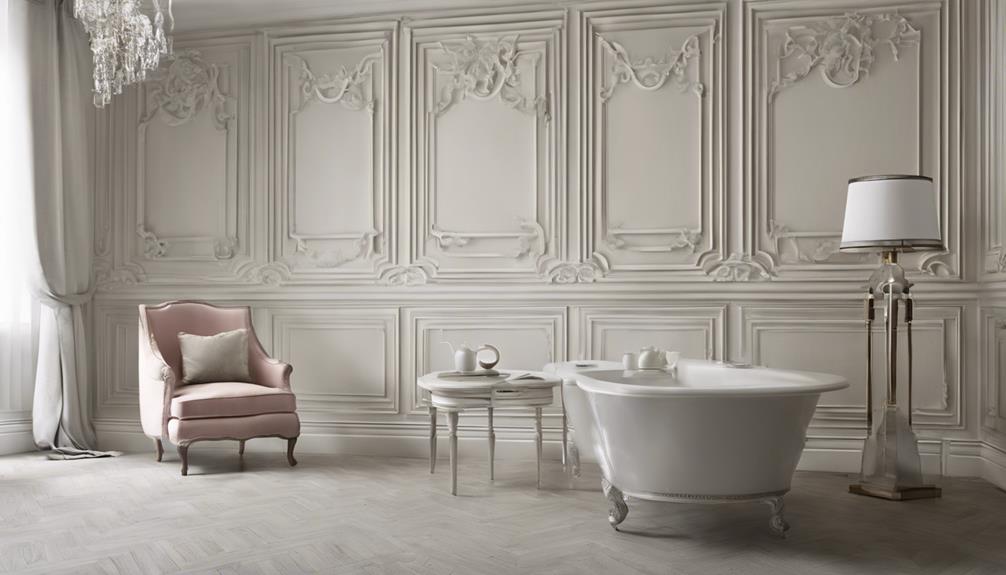
Let's enhance our home's aesthetic appeal by exploring the world of decorative molding.
From crown molding to chair rail molding, each type brings its unique charm to the walls.
We'll guide you on selecting the perfect style and provide expert tips for seamless installation.
Types of Molding
Decorative molding, a versatile design element, encompasses various types such as crown molding, chair rail molding, and baseboard molding, each serving to enhance the aesthetic appeal of walls and ceilings.
- Crown Molding: Adds a touch of sophistication to a room by creating a seamless transition between walls and ceilings.
- Chair Rail Molding: Not only protects walls from scuff marks caused by furniture but also acts as a stylish accent that can elevate the overall look of a space.
- Baseboard Molding: Covers the joint between the wall and the floor, giving a room a polished and finished appearance.
These molding types are essential for adding character and charm to your home with minimal effort.
Choosing the Right Style
As we explore the realm of decorative molding, our focus shifts towards the pivotal task of selecting the right style that will truly elevate the aesthetics of your living spaces.
When considering the front of your house, chair rail molding emerges as a fantastic option. This type of molding not only adds charm and character to your walls but also serves a functional purpose by breaking up large flat areas.
Chair rail molding is versatile and can adapt to different design styles, from traditional to modern, making it a perfect choice for those seeking both visual appeal and practicality.
Installation Tips
To achieve a seamless and professional look when installing decorative molding, consider starting the process by measuring and marking the walls accurately for precise placement. When installing decorative molding, here are some installation tips to keep in mind:
- Use a Miter Saw: Invest in a good quality miter saw to ensure clean and precise cuts for perfect corners.
- Secure Properly: Use a strong adhesive along with nails or screws to secure the molding firmly in place.
- Fill and Sand: After installation, fill any gaps and sand down rough edges for a flawless finish.
With these tips, your decorative molding will enhance the elegance of your space effortlessly.
Revamp Entryway
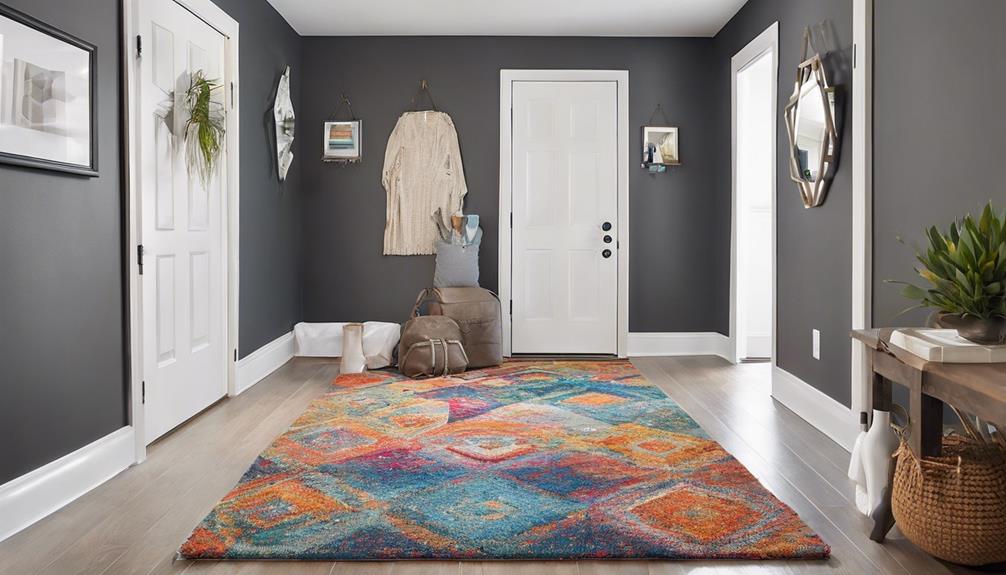
Enhance your entryway with a vibrant pop of color on the front door to instantly draw the eye and create a striking focal point. Choosing a bold color for your front door can completely transform the look of your home's entrance, making it more inviting and stylish. Pair this with colorful flowers, a new welcome mat, or a seasonal wreath to add a welcoming touch that reflects your personality.
In addition to painting the door, consider upgrading the door hardware for a modern look and improved functionality. Stylish lighting fixtures like sconces or pendants can also illuminate and beautify the entryway, creating a warm and inviting atmosphere. To add personality and style, think about installing a decorative mirror or artwork that complements the bold color of the door. These simple DIY tricks can revamp your entryway and make a lasting impression on your guests.
Showcase Artwork
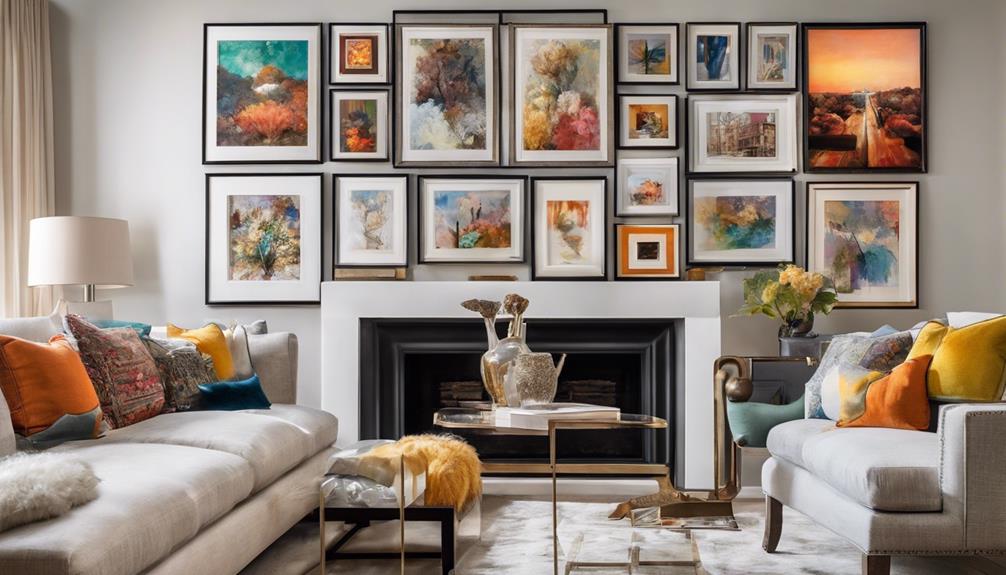
Let's turn our attention now to showcasing artwork as a way to elevate the room's aesthetic and create captivating focal points. When it comes to showcasing artwork, there are various creative ways to make your walls come alive and reflect your unique style.
Here are some innovative ideas to consider:
- Mix and Match: Experiment with different sizes, styles, and types of artwork to add depth and visual interest to your space. Create a custom gallery wall by combining various pieces that speak to you, whether they're paintings, photographs, or prints.
- Curated Display: Consider creating a custom gallery wall with a mix of frames and artwork for a curated look. This approach allows you to showcase a collection of pieces that complement each other while adding personality to your room.
- Personal Statement: Utilize artwork to reflect your personal style and add a touch of personality to the room. Choose pieces that resonate with you and evoke emotions, making your space feel uniquely yours.
Layer Textures
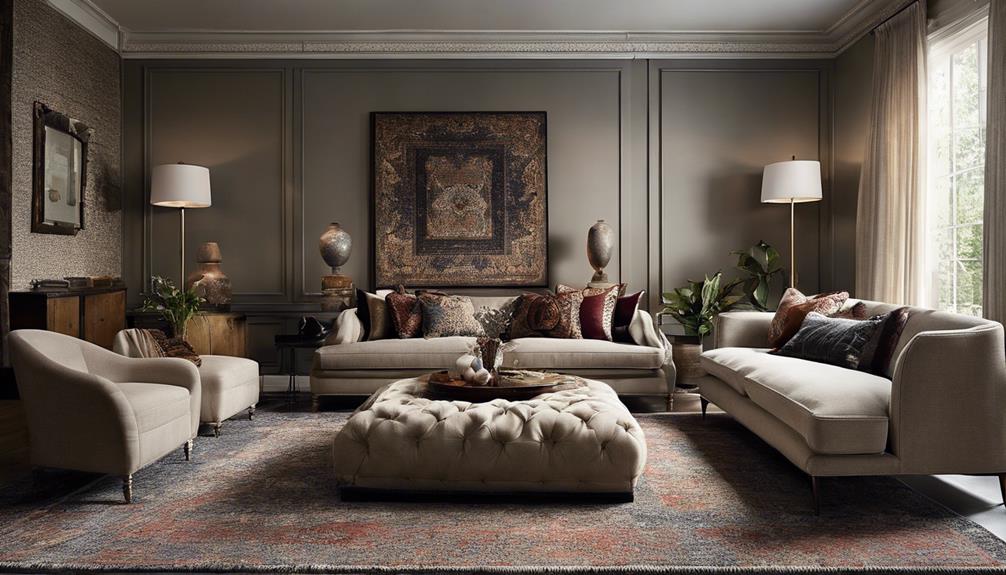
Incorporating a variety of textures in your home decor can instantly elevate the visual appeal of your space, creating a dynamic and inviting atmosphere. To make your house look less flat, layering textures is key. By combining materials like wood, metal, fabric, and glass, you can add depth and interest to your living areas.
Introduce different textures through elements such as throw pillows, rugs, curtains, and wall art to create a more dynamic feel. Consider incorporating luxurious textures like velvet, fur, jute, or leather to bring warmth and sophistication to your rooms. Mixing these textures can transform a flat-looking space into a cozy and visually appealing environment with character.
Experiment with contrasting textures to achieve a curated and stylish look. Embrace the art of layering textures to infuse your home with personality and charm, making it a place you love to spend time in.
Frequently Asked Questions
How Do I Make My House Feel High End?
We can make our house feel high end by incorporating neutral shades for an expensive and sophisticated look.
Updating lighting fixtures with modern pendant lights adds a contemporary touch.
Mimicking built-ins with bookcases creates a luxurious feel affordably.
Replacing hardware like towel bars and drawer pulls provides a quick and inexpensive update.
Adding a tile backsplash, especially subway tile, can give the kitchen an expensive look in a cost-effective way.
How Can I Make My Plain House Look Better?
We can make our plain house look better by adding shutters or awnings for dimension. Enhancing front steps and creating a walkway to the door can boost appeal.
Incorporating brick or flagstone adds texture. Professional landscaping with front gardens elevates curb appeal.
These improvements transform the exterior, making our home more inviting and visually appealing. By implementing these changes, our plain house can become a standout in the neighborhood.
How Can I Spruce up My House?
We can spruce up our house by adding dimension with shutters or awnings. Enhancing front steps for a better look is another great idea. Creating an inviting walkway to the entrance can also make a big difference. Incorporating textured elements like brick or flagstone adds character. Investing in professional landscaping with front gardens can further elevate the appearance of our home.
These simple yet effective DIY tricks can significantly enhance the overall appeal of our home and make it stand out in the neighborhood.
How Can I Decorate My House With Simple Things?
When decorating our house with simple things, we focus on creating a cozy and inviting atmosphere. By incorporating elements like colorful throw pillows, stylish rugs, and unique wall art, we effortlessly elevate our living space.
These small additions bring personality and character to each room, making our house feel like a warm and welcoming retreat. By combining these simple touches, we transform our space into a haven that reflects our style and creativity.
Conclusion
As we put the finishing touches on our flat-front house transformation, we can't help but feel a sense of excitement and anticipation. Each DIY trick we've implemented has added layers of character and charm to our home, setting the stage for a stunning reveal.
Stay tuned as we unveil the final look, showcasing how a little creativity and effort can truly make a house feel like a work of art. Get ready to be amazed!
- About the Author
- Latest Posts
Introducing Ron, the home decor aficionado at ByRetreat, whose passion for creating beautiful and inviting spaces is at the heart of his work. With his deep knowledge of home decor and his innate sense of style, Ron brings a wealth of expertise and a keen eye for detail to the ByRetreat team.
Ron’s love for home decor goes beyond aesthetics; he understands that our surroundings play a significant role in our overall well-being and productivity. With this in mind, Ron is dedicated to transforming remote workspaces into havens of comfort, functionality, and beauty.
Architecture Home Styles
Essential Elements for Creating a Beach House Oasis
Lure your senses into a coastal dreamland with the essential elements that transform a beach house into an enchanting oasis.
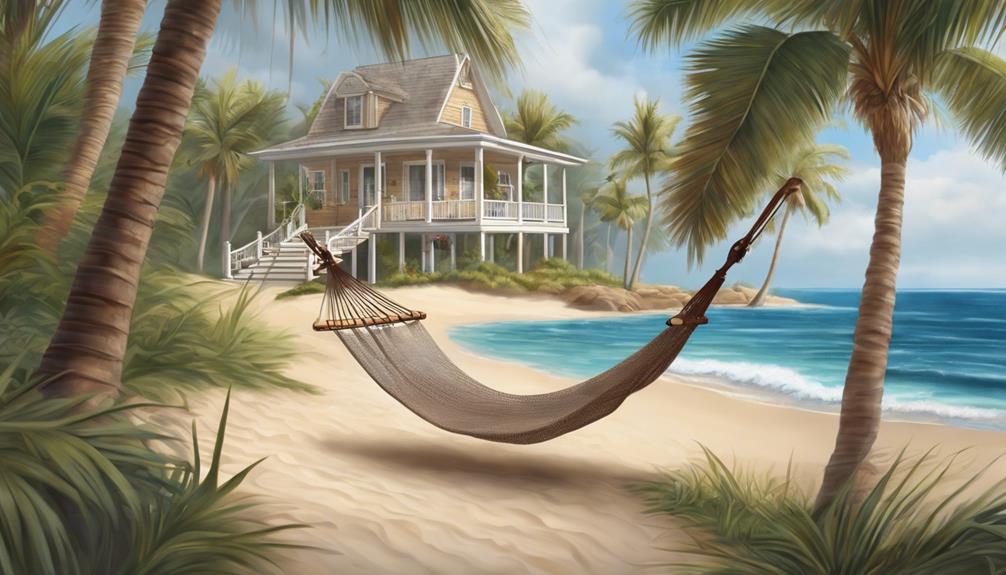
Picture this: the gentle sound of waves lapping against the shore as you relax on a sun-kissed deck, a cool breeze whispering through the palm trees.
Creating a beach house oasis requires careful consideration of elements that blend seamlessly to evoke a sense of tranquility and escape. From selecting the right materials to designing cozy nooks for lounging, each detail plays a crucial role in crafting the perfect coastal retreat.
But what truly makes a beach house oasis stand out? Let's explore together.
Key Takeaways
- Coastal color palette with natural textures for harmonious beach house vibes.
- Nautical theme incorporating marine elements for a classic seaside feel.
- Outdoor oasis elements like water features and plush seating for relaxation.
- Seaside decor with nautical accents and coastal-themed artwork for maritime charm.
Coastal Color Palette
In our quest to create a beach house oasis, we embrace a coastal color palette that harmoniously blends blues, whites, sandy tones, and natural wood finishes to infuse our space with a sense of serenity. By incorporating these coastal hues, we bring the essence of coastal living right into our home. To enhance the warmth and texture of our outdoor living area, we introduce pops of coral or turquoise as accent colors, adding visual interest and depth to the space. This blend of colors not only creates a soothing atmosphere but also reflects the beauty of the outdoors.
When designing our outdoor seating and dining areas, we ensure that the coastal decor flows seamlessly with the natural materials used. The warmth and inviting nature of the color palette make the outdoor space feel like an extension of the beach, inviting us to relax and unwind in style. By incorporating water elements, we further enhance the coastal theme, creating a tranquil ambiance that celebrates the beauty of outdoor living.
Natural Textures and Fabrics
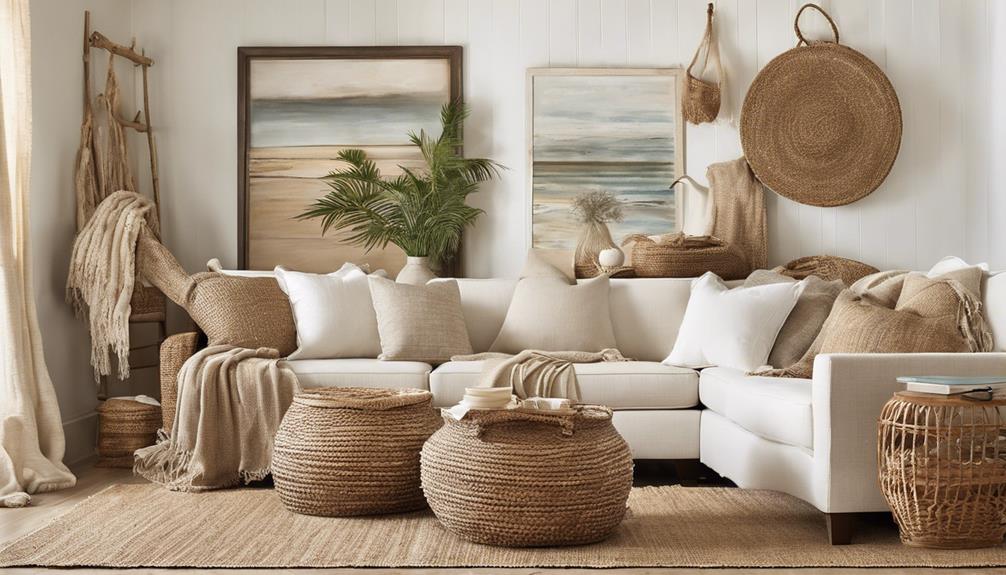
Embracing the coastal color palette sets the stage for our exploration of natural textures and fabrics. This introduces elements like jute, bamboo, and wicker to infuse our beach house oasis with a serene and beach-inspired vibe.
When it comes to creating an outdoor sanctuary, incorporating these organic materials brings a touch of the natural world into our living spaces. Opt for furniture with weathered wood finishes or driftwood accents, adding a rustic charm that complements the coastal theme effortlessly.
For a relaxed and comfortable ambiance, choose organic fabrics like cotton, linen, and hemp in sea-inspired colors and textures for rugs and throw pillows. This creates a sense of warmth and depth in every corner.
To allow the gentle coastal breeze and natural light to filter through seamlessly, select curtains or window treatments made from sheer fabrics. By incorporating these natural textures and fabrics, our beach house oasis will be a true haven of tranquility and style.
Nautical Accents
Exploring nautical accents infuses our beach house oasis with a charming coastal flair, evoking the essence of seaside living through elements like stripes, anchors, and marine-themed decor. To achieve this coastal look, we incorporate nautical decor in classic navy blue, white, and red color schemes. These colors perfectly complement the beach house's coastal theme, adding a touch of maritime elegance. Sailboat models and lighthouse decor not only enhance the ambiance but also bring character and charm to the space.
Rope accents are a fantastic way to tie in the nautical theme, adding texture and visual interest. Consider incorporating marine-themed artwork to bring the beauty of the sea indoors. These elements, combined with driftwood and ship wheels, create a cohesive beach house oasis that transports you to the shoreline. Anchor-printed throw pillows and sailcloth curtains further elevate the decor, while rope rugs add a touch of authenticity to the space. By embracing nautical accents, we transform our beach house into a maritime paradise.
Outdoor Relaxation Spaces
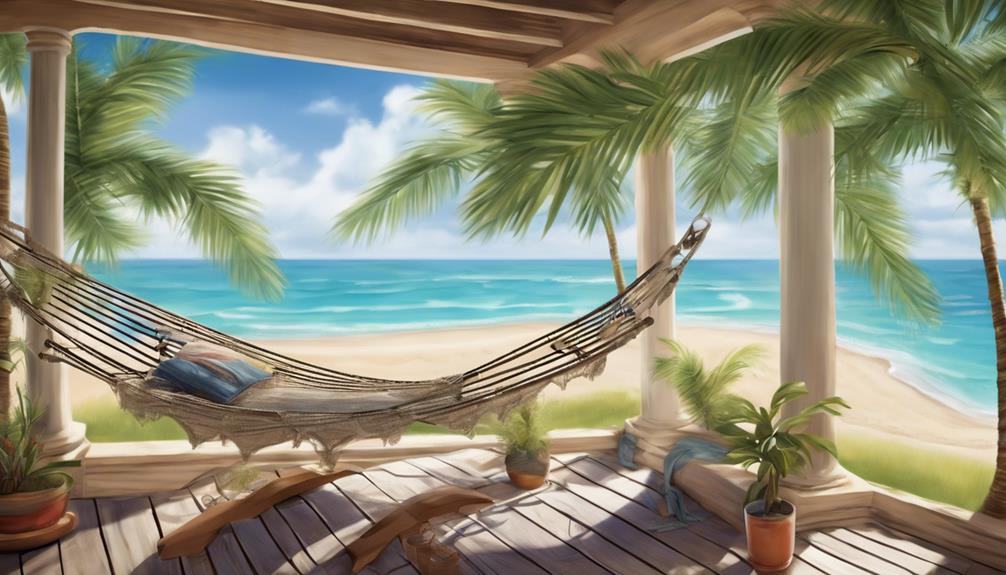
Our outdoor relaxation spaces at the beach house oasis beckon with plush seating areas and coastal-inspired comfort, perfect for unwinding under the sun.
The blend of comfortable seating like outdoor sofas and lounge chairs, adorned with fade-resistant outdoor fabrics in soothing coastal colors, creates a tranquil atmosphere.
To provide relief from the sun's rays, shade structures such as pergolas stand elegantly, offering a cool retreat while enjoying the outdoor space.
Water features like fountains or ponds add a touch of serenity to the surroundings, enhancing the overall relaxation ambiance.
For the ultimate outdoor oasis experience, consider incorporating a pool or spa into the beach house setting, elevating relaxation to new heights.
With a careful balance of comfortable seating, coastal aesthetics, shade structures, and water elements, our outdoor relaxation spaces promise a rejuvenating escape in a beachfront paradise.
Seaside-Inspired Decor
Amidst the coastal breeze, we infuse our beach house oasis with seaside-inspired decor, capturing the essence of a maritime retreat. To evoke a classic coastal vibe, we incorporate nautical elements like anchors, ropes, and ship wheels into our design scheme. The color palette of navy blue, white, and red sets the tone for a beach house aesthetic that's both timeless and refreshing.
Seashell collections, beach glass, and driftwood serve as decorative accents, bringing a touch of the seaside indoors. We adorn our space with striped patterns in textiles such as rugs, curtains, and throw pillows, adding a sense of movement and fluidity to the decor. Coastal-themed artwork featuring lighthouses, sailboats, or beach scenes adorns our walls, further enhancing the maritime ambiance.
With a keen eye for detail and a love for all things coastal, our seaside-inspired decor transforms our beach house into a sanctuary of relaxation and rejuvenation.
Frequently Asked Questions
What Are the Key Elements of Coastal Interior Design?
When considering coastal interior design, the key elements include a color palette of blues, whites, sandy tones, and natural wood finishes for a beachy vibe.
Textures play a vital role, creating depth through materials like rattan, jute, and linen.
Nautical elements, like stripes and marine-themed decor, enhance the coastal theme.
Pops of coral or turquoise in accent pieces add vibrancy.
Natural light is maximized to create a bright, breezy atmosphere reminiscent of beach living.
What Makes a Beach House Look Like a Beach House?
When we think of what makes a beach house look like a beach house, we envision pale colors, natural textures, and coastal accents.
Incorporating elements like bamboo blinds, wicker furniture, and a mix of textiles adds depth and warmth to the space.
Stripes in decor and a coastal color palette with sandy tones, blues, and greens enhance the beachy vibe. These details come together to create that unmistakable beach house ambiance we all love.
How to Design a Coastal Home?
When designing a coastal home, we blend pale colors, natural materials, and varied textures to evoke a beachy vibe. Our palette includes blues, whites, sandy tones, and vibrant coral or turquoise accents for a breezy feel.
We incorporate seaside elements like nautical decor, coral sculptures, and striped patterns for a cohesive look. Opt for functional furniture with durable fabrics and storage solutions to create a relaxed beach house ambiance.
How Do You Make Coastal Decor?
We make coastal decor by incorporating seashells, driftwood, and coral as decorative accents.
We use coastal-themed artwork like seascapes and beach scenes.
Additionally, we add textiles in beachy colors and choose accessories that reflect beach colors, textures, and themes.
These elements create a relaxing and inviting atmosphere in our beach house oasis.
Conclusion
As we wrap up our beach house oasis project, we can't help but be amazed by the power of design to transform a space into a serene retreat.
Did you know that according to a recent survey, 85% of people feel more relaxed and at peace when surrounded by coastal decor elements?
By incorporating essential elements like a coastal color palette, natural textures, nautical accents, and outdoor relaxation spaces, you can create your own beach paradise right at home.
- About the Author
- Latest Posts
Introducing Ron, the home decor aficionado at ByRetreat, whose passion for creating beautiful and inviting spaces is at the heart of his work. With his deep knowledge of home decor and his innate sense of style, Ron brings a wealth of expertise and a keen eye for detail to the ByRetreat team.
Ron’s love for home decor goes beyond aesthetics; he understands that our surroundings play a significant role in our overall well-being and productivity. With this in mind, Ron is dedicated to transforming remote workspaces into havens of comfort, functionality, and beauty.
Architecture Home Styles
Exploring the Difference Between Traditional and Classic Design
Kickstart your journey into the world of design by uncovering the subtle yet significant distinctions between traditional and classic styles, shaping your perception of timeless elegance.
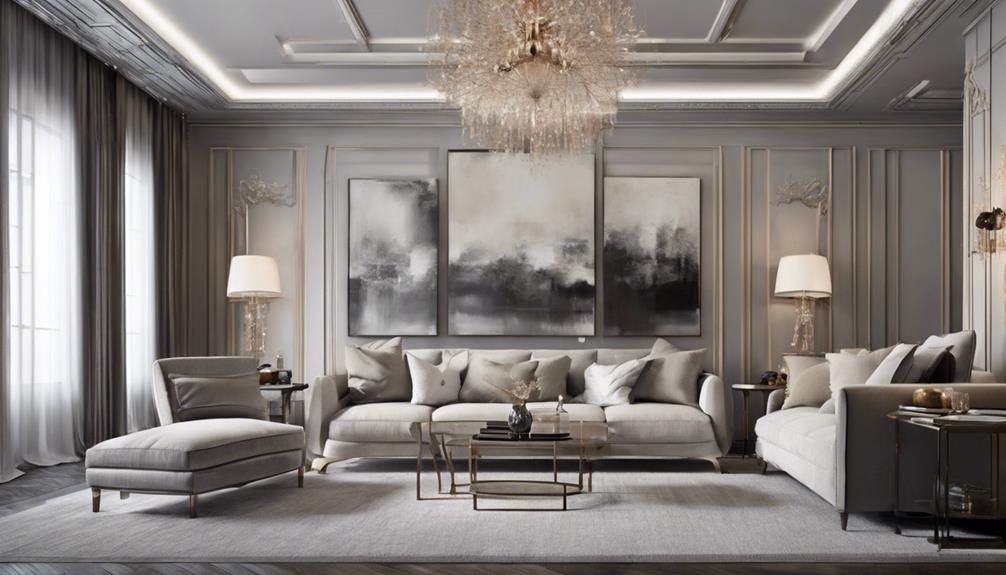
When considering traditional versus classic design, we uncover nuanced distinctions in style and aesthetic preferences. The interplay between historical influences and contemporary interpretations provides a fascinating insight into the evolution of design principles.
As we explore the intricate details and subtle nuances that set these two styles apart, it becomes evident that each offers a unique perspective on elegance and sophistication.
Stay tuned to unravel the intricacies that define the essence of traditional and classic design, shedding light on the nuances that shape our perception of timeless aesthetics.
Key Takeaways
- Traditional design features bold colors and intricate patterns, while classic design opts for soft and subdued colors for elegance.
- Both traditional and classic design styles focus on creating a balanced, inviting, and harmonious atmosphere.
- Traditional furniture embodies moderation and balance with solid wood, while classic furniture exudes nobility with gilded finishes.
- Lighting in traditional design aims for warmth and coziness, while classic design creates a luxurious ambiance with ornate fixtures.
Key Elements in Traditional Design
In traditional design, we intricately weave together elements of moderation, elegance, and balance to create a timeless aesthetic inspired by the rich European design traditions of the 18th and 19th centuries. Solid wood plays a pivotal role in this style, exuding warmth and coziness throughout the space. The choice of fabrics like cotton, leather, and velvet further enhances the comfort aspect, inviting you to sink into luxurious textures. Lighting is carefully curated to emanate a soft and inviting glow, achieved through the use of ambient sources such as table lamps and floor lamps, setting a cozy ambiance.
The color palette in traditional design is a symphony of rich colors like deep reds, lush greens, and vibrant yellows, adding depth and character to the space. These hues evoke a sense of opulence and sophistication, harmonizing beautifully with the overall design scheme. The blend of these elements creates a space that not only exudes elegance but also envelops you in a sense of comfort and luxury.
Characteristics of Classic Design
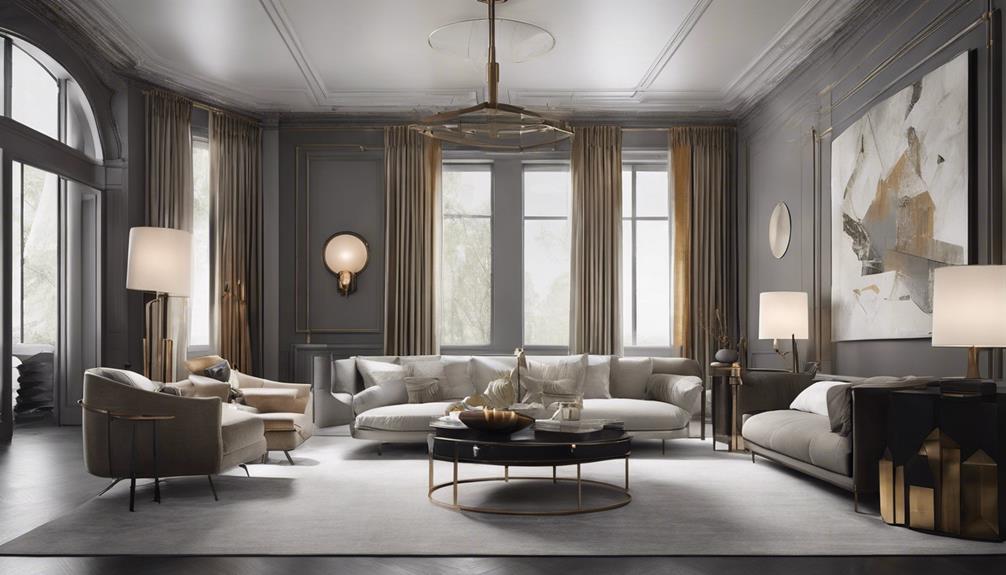
Transitioning from the rich tapestry of traditional design, classic design embodies a timeless allure through its emphasis on neutral hues, enduring furniture pieces, and ageless patterns. Classic design is about creating a space that feels elegant and sophisticated, never going out of style. This style incorporates traditional furniture pieces like wingback chairs and claw-foot tables, showcasing intricate details and a focus on symmetry. Antique or vintage items are often integrated into classic interiors to enhance the sense of heritage and history. Natural materials such as wood and marble play a significant role in classic design, adding a touch of authenticity and luxury. The use of neutral colors like beige, ivory, and taupe creates a serene and calming atmosphere, perfect for those who appreciate a refined aesthetic. Classic design is about capturing the essence of timeless beauty and creating a space that exudes grace and elegance.
| Characteristics | Description | Example |
|---|---|---|
| Neutral Colors | Create a serene atmosphere | Beige, Ivory, Taupe |
| Traditional Furniture | Emphasize heritage and sophistication | Wingback chairs, Claw-foot tables |
| Intricate Details | Showcase fine craftsmanship | Ornate carvings, Embossed patterns |
| Natural Materials | Add authenticity and luxury | Wood, Marble, Leather |
| Timeless Patterns | Enhance the sense of elegance | Damask, Toile, Houndstooth |
Color Palette Variances
Let's delve into the captivating interplay of colors in traditional and classic design, unveiling their distinct palettes and the emotions they evoke within interior spaces.
Traditional design is known for its bold use of color, incorporating rich tones like red, green, and yellow to create a lively and accented color palette. In contrast, classic design opts for a more subdued approach, favoring neutral and soft colors that convey timeless sophistication and elegance. Both styles share a common emphasis on proportion and harmony when selecting colors, ensuring a visually pleasing aesthetic within the space.
Classic design often showcases prestigious materials with subtle contrasts, exuding an air of understated luxury. On the other hand, traditional design tends to embrace vibrant colors and intricate patterns, adding a sense of energy and warmth to the room. The careful selection of color palettes in traditional and classic design plays a vital role in shaping the overall ambiance and character of the interior, showcasing a harmonious blend of elegance, proportion, and timeless sophistication.
Differences in Furniture Styles
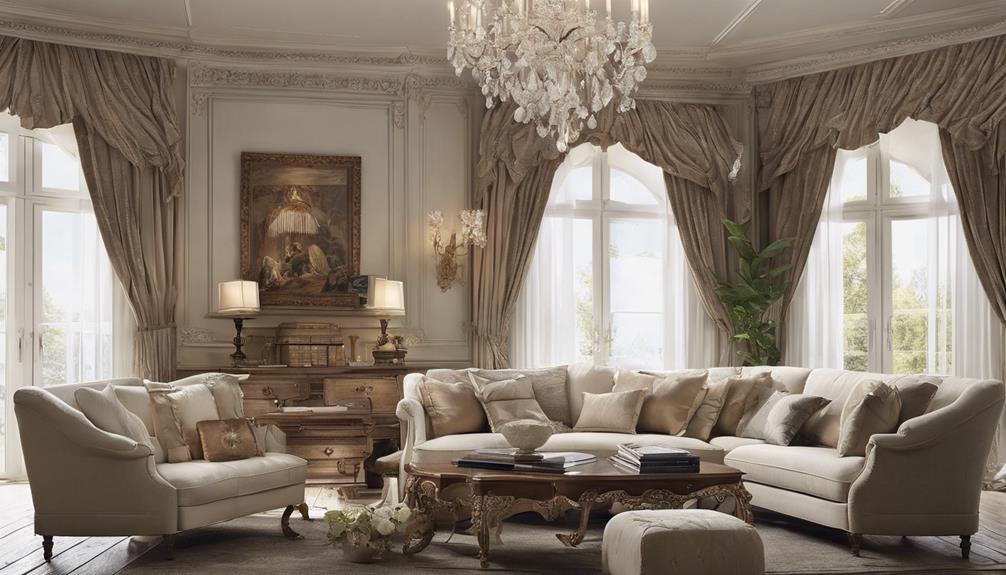
Embarking on a journey through the realm of interior design, we are met with a striking divergence in furniture styles between traditional and classic design aesthetics. Traditional furniture in European design, originating from the 18th and 19th centuries, embodies moderation, elegance, and balance. On the other hand, classic furniture exudes noble atmospheres with pomposity, showcasing prestigious materials like oak, mahogany, ceramic, marble, gold, and silver finishes.
| Traditional Furniture | Classic Furniture |
|---|---|
| Rooted in European design | Exudes ethereal nobility |
| Favoring moderation | Prestigious materials |
| Warmth and coziness | Gilded and opulent |
In traditional style, harmony is achieved through blending various elements, offering warmth and coziness with solid wood furniture and fabrics like cotton, leather, and velvet. In contrast, classic style features gilded finishes and gold leaf for a luxurious look, emphasizing richness and opulence. These styles also extend into lighting design, with traditional opting for warmer and softer lighting, creating a cozy feel with ambient lighting solutions like table lamps and floor lamps, while classic style leans towards ornate chandeliers and sconces for a grandiose touch.
Lighting Design Variances
As we delve into the realm of lighting design variances, a captivating interplay emerges between classic and traditional interior styles, each illuminating spaces with unique charm and character. Classic design exudes richness and opulence through lighting fixtures like grand chandeliers and intricately detailed sconces. These ornate details in classic lighting fixtures create a luxurious ambiance, evoking a sense of grandeur and sophistication within a space.
On the other hand, traditional design takes a softer approach, opting for warmer and cozier lighting solutions such as table lamps and floor lamps. The emphasis in traditional design is on creating a welcoming and comfortable environment, where ambient lighting plays a pivotal role in setting the mood. This style aims to promote a sense of intimacy and relaxation, steering away from the grandiose nature of classic design.
Both classic and traditional design styles strive for elegant lighting options that not only serve a functional purpose but also enhance the overall ambiance of a room. Whether it's the opulence of classic chandeliers or the cozy feel of traditional table lamps, lighting design plays a crucial role in shaping the character of a space.
Frequently Asked Questions
How Is Traditional Design Different From Modern Design?
Traditional design differs from modern design in various aspects.
We see traditional design focusing on warmth and rich colors like red and green, while modern design emphasizes sleek lines and minimalism.
Traditional design incorporates natural materials like wood for a cozy atmosphere, whereas modern design utilizes innovative materials for a contemporary look.
The former favors classic furniture with intricate details, while the latter features unique furniture and cutting-edge designs.
What Is the Definition of Traditional Design?
When it comes to traditional design, it's like stepping into a cozy retreat filled with elegant charm. Rich colors like red, green, and yellow dance together, creating a lively palette.
Classic lines and solid wood furniture greet you warmly, while fabrics like cotton and velvet whisper comfort and luxury. It's a timeless style that wraps you in a familiar embrace, making every corner of your home feel like a cherished memory.
What Is the Difference Between Modern Design and Classic Design?
When it comes to modern design and classic design, the distinction lies in their contrasting aesthetics.
Modern design embodies sleek lines and cutting-edge materials, reflecting a contemporary and innovative vibe.
In contrast, classic design exudes elegance and timeless sophistication with its traditional furniture and luxurious details.
These two styles offer a unique blend of old-world charm and futuristic elements, catering to different tastes and preferences in the world of design.
What Is the Difference Between Modern and Classic Home Design?
When it comes to modern and classic home design, the distinction lies in their essence.
Modern design embodies innovation and creativity with sleek lines and cutting-edge materials, ideal for those seeking a contemporary aesthetic.
Classic design, on the other hand, exudes elegance and sophistication through timeless pieces and intricate details, appealing to those who value tradition and refinement in their living spaces.
These contrasting styles offer unique choices for expressing personal taste and style preferences.
How Does Traditional Design Differ from Classic Design in Terms of Aesthetics and Functionality?
Traditional design encompasses a more ornate and intricate aesthetic, while classic design focuses on simplicity and elegance. In terms of functionality, traditional design often prioritizes practicality, while classic design may incorporate more decorative elements. The main difference between modern design and traditional design lies in their approach to aesthetics and practicality.
Conclusion
As we wrap up our exploration of traditional and classic design, it's clear that these styles offer unique and distinct characteristics. From the cozy warmth of traditional design to the timeless elegance of classic design, each style brings its own charm and sophistication to any space.
Whether you prefer the rich colors and intricate details of traditional design or the opulent finishes and neutral palettes of classic design, there's no doubt that both styles can create a truly stunning and inviting atmosphere.
So, which style speaks to you?
- About the Author
- Latest Posts
Introducing Ron, the home decor aficionado at ByRetreat, whose passion for creating beautiful and inviting spaces is at the heart of his work. With his deep knowledge of home decor and his innate sense of style, Ron brings a wealth of expertise and a keen eye for detail to the ByRetreat team.
Ron’s love for home decor goes beyond aesthetics; he understands that our surroundings play a significant role in our overall well-being and productivity. With this in mind, Ron is dedicated to transforming remote workspaces into havens of comfort, functionality, and beauty.
-

 Vetted5 days ago
Vetted5 days ago15 Best Boxwood Varieties for Thriving in Full Sunlight
-

 Vetted1 week ago
Vetted1 week ago15 Best Ways to Label Clothes for Nursing Home Residents – Stay Organized and Efficient
-

 Vetted6 days ago
Vetted6 days ago15 Best Dryer Vent Hoses to Keep Your Laundry Room Safe and Efficient
-

 Vetted6 days ago
Vetted6 days ago15 Best Spider Sprays to Keep Your Home Arachnid-Free
-

 Vetted5 days ago
Vetted5 days ago14 Best Cleaners for Aluminum Surfaces – Shine Bright Like a Diamond
-

 Vetted6 days ago
Vetted6 days ago15 Best Nightstand Charging Stations to Keep Your Devices Organized and Ready to Go
-
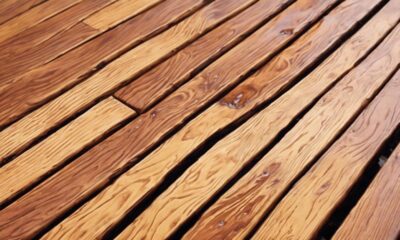
 Vetted22 hours ago
Vetted22 hours ago15 Best Ways to Waterproof Wood for Ultimate Protection and Longevity
-
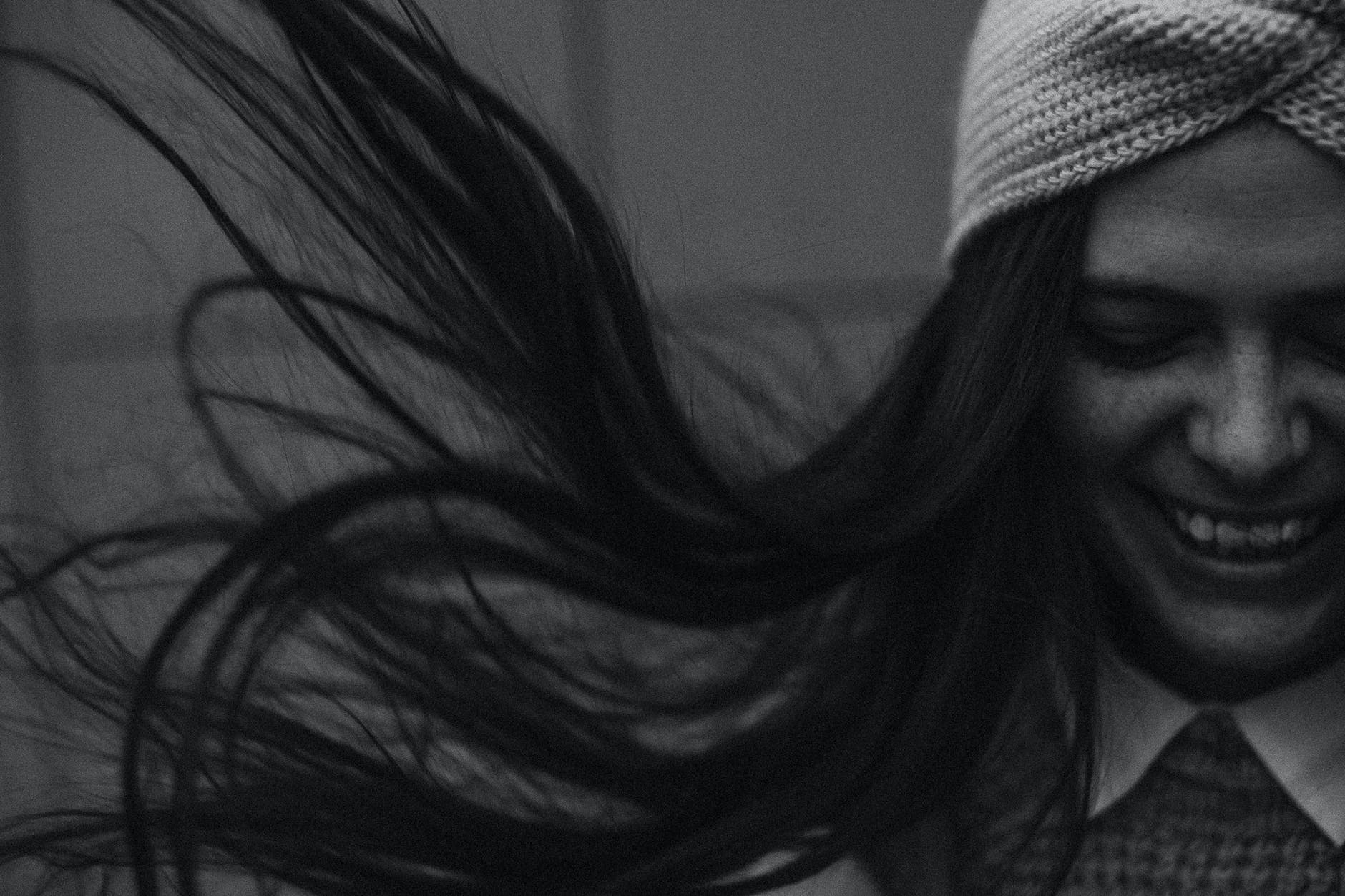
 Beginners Guides4 days ago
Beginners Guides4 days agoHow to Slow Down My Ceiling Fan to Reduce Wind Chill







